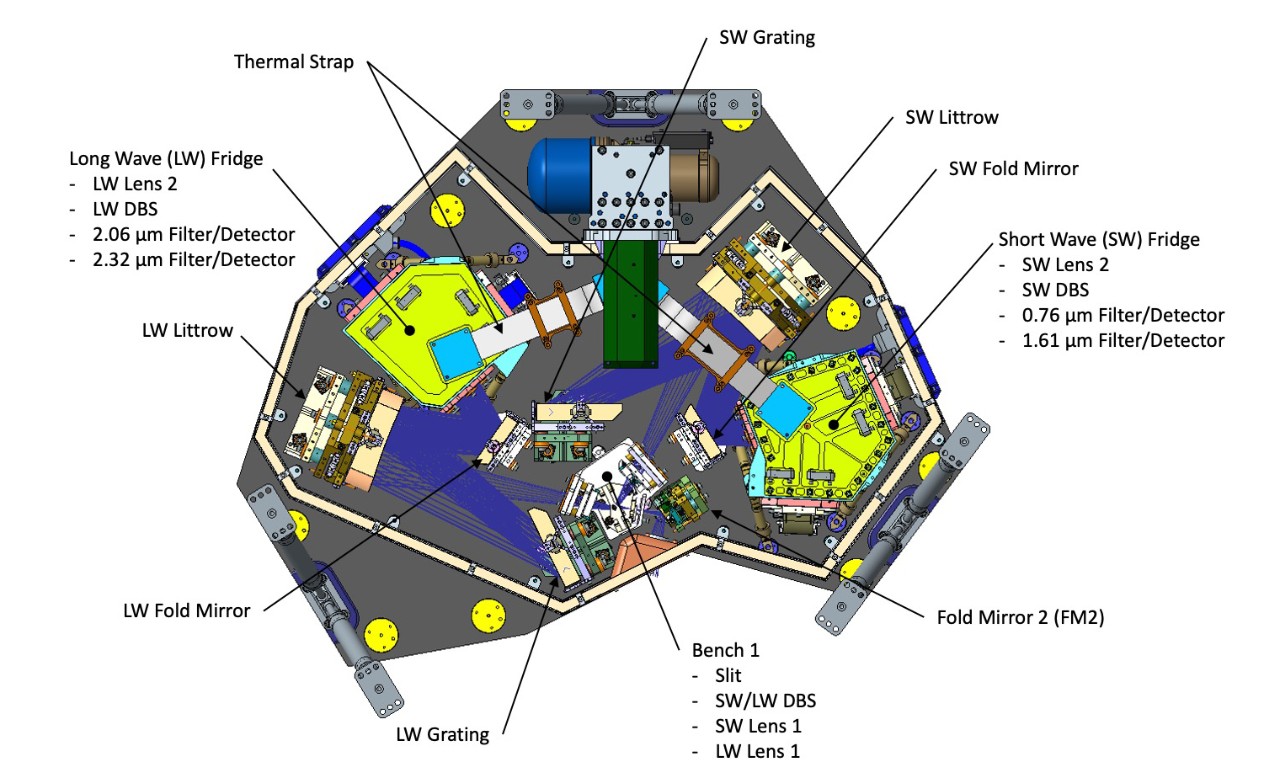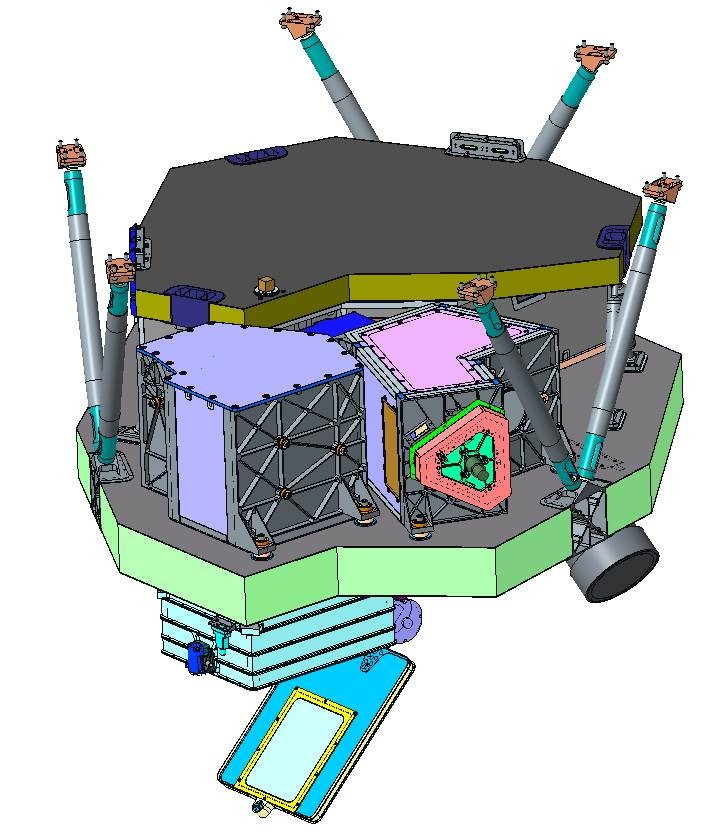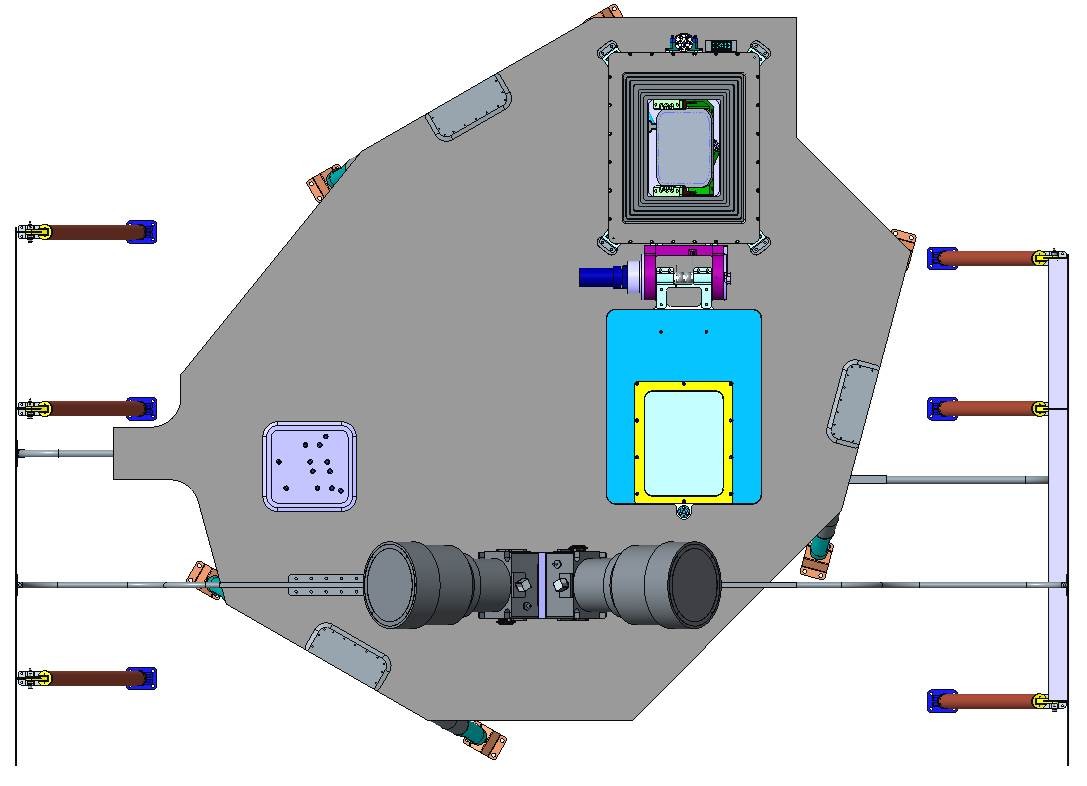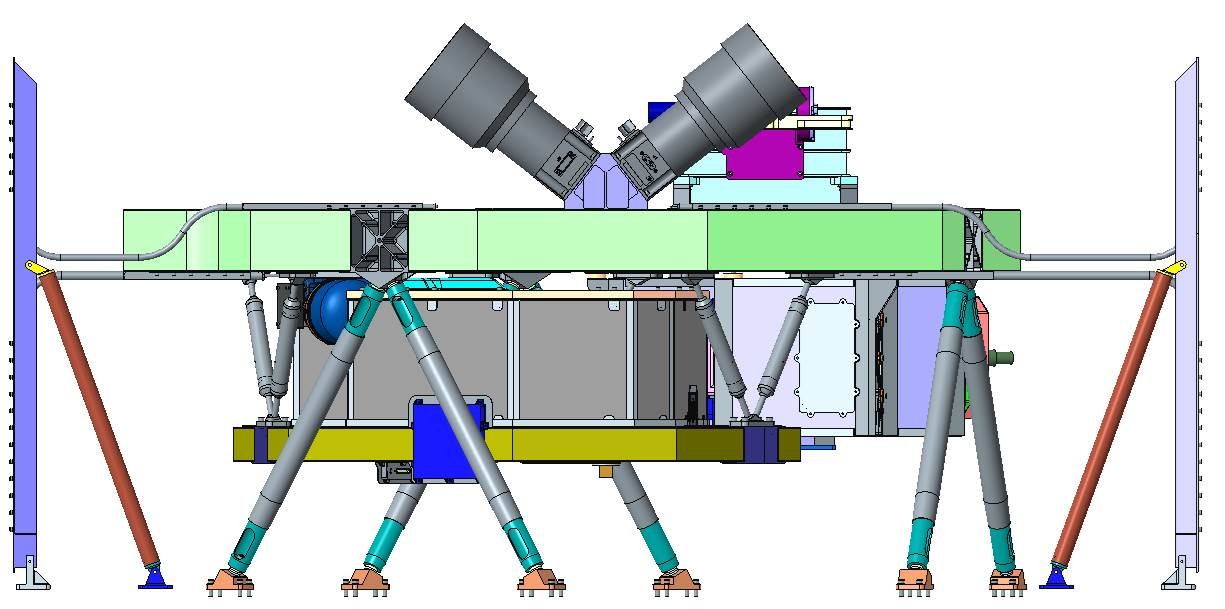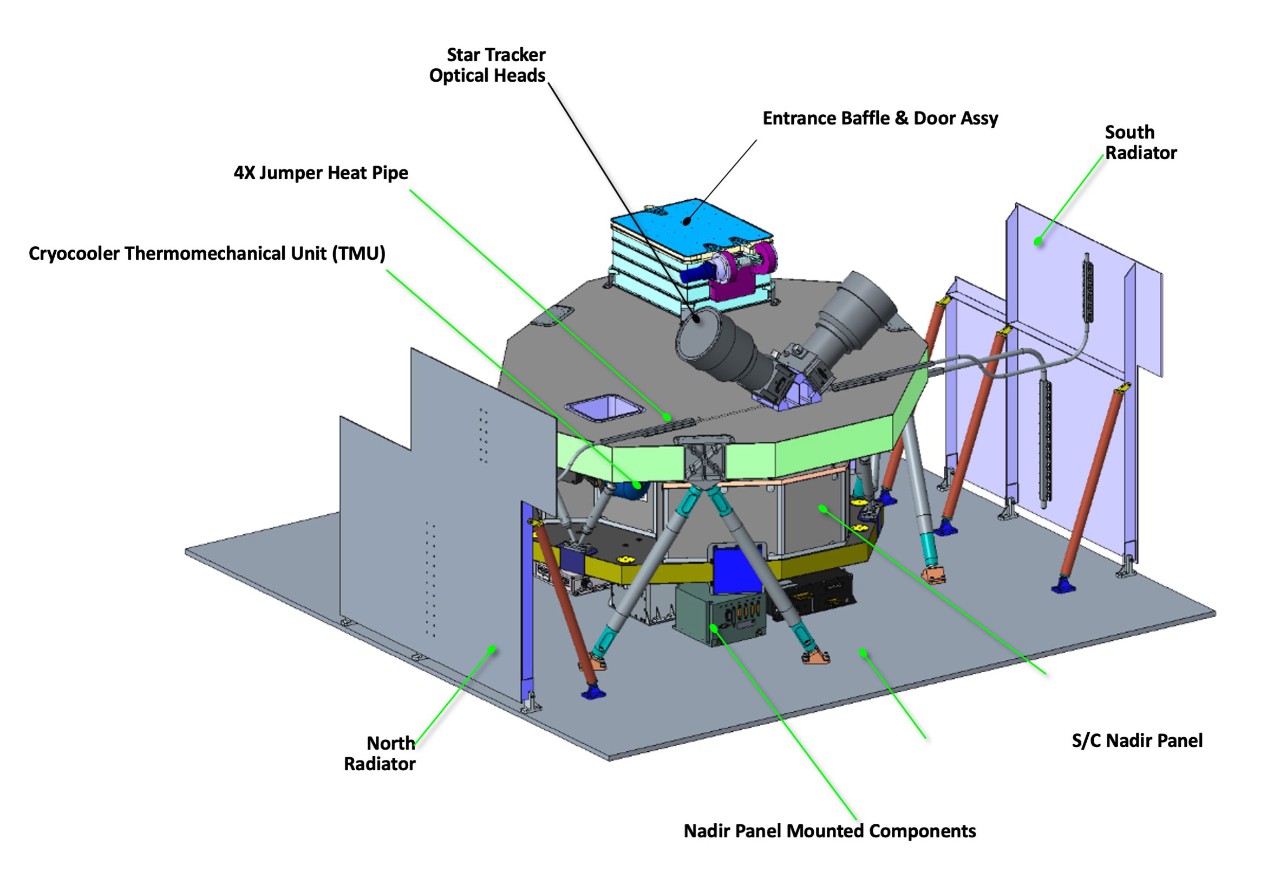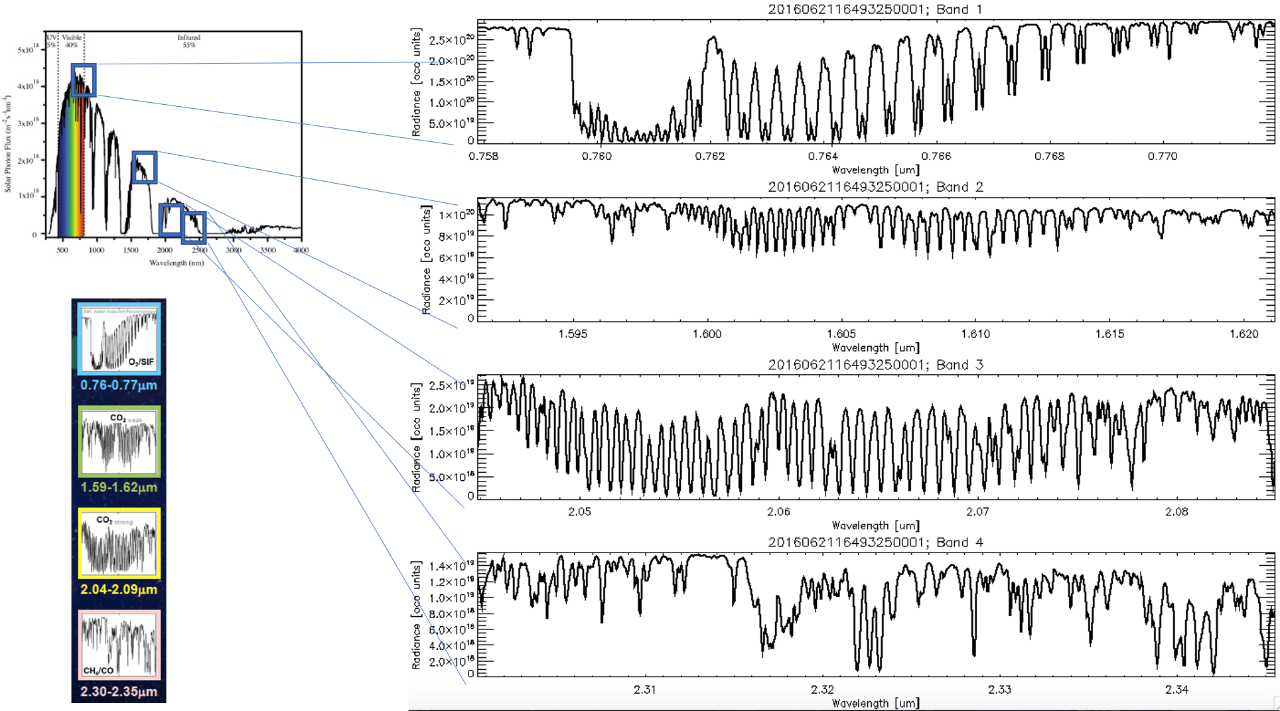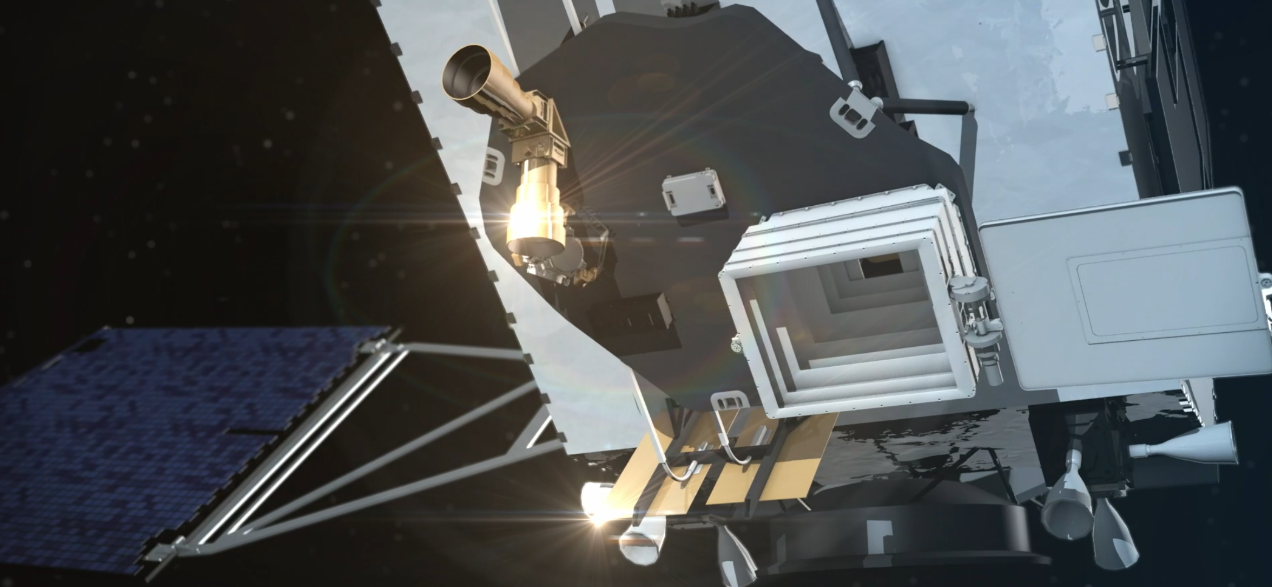
Strong Heritage
NASA pioneered GeoCarb's spectrometer technology on an earlier mission—the Orbiting Carbon Observatory 2 (OCO-2). OCO-2 launched into Low Earth Orbit in 2014 and has since been measuring carbon dioxide from space, passing from pole to pole several times per day, as the Earth turns beneath it.
GeoCarb is optimized to measure carbon dioxide, carbon monoxide, methane, and Solar Induced Fluorescence (SIF) from Geostationary Orbit.
Mechanical Layout
The GeoCarb instrument consists of the aperture assembly, telescope, spectrometer, and electronics boxes. It is a four channel near-infrared, single-slit imaging spectrograph optimized to deduce concentrations of carbon dioxide, carbon monoxide and methane, and Solar-Induced Fluorescence (SIF) from Geostationary Orbit.
The instrument is built by Lockheed Martin Advanced Technology Center.
Spectrometers
There are two grating spectrometers, four focal plane assemblies cooled to 125 degrees Kelvin and Cold Optical Bench cooled to ≈190 degrees Kelvin. Cooling by Northrup Grumman thermal-mechanical unit.
The 4-channel, slit-scan spectrometer will measure absorption spectra at wavelengths 1.61, 2.06, and 2.32 μm in sunlight reflected from the land to retrieve total atmosphere-column amounts of CO, CO2 and CH4 from geostationary orbit.
